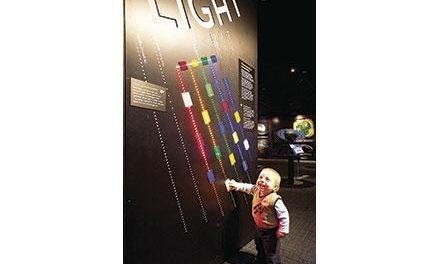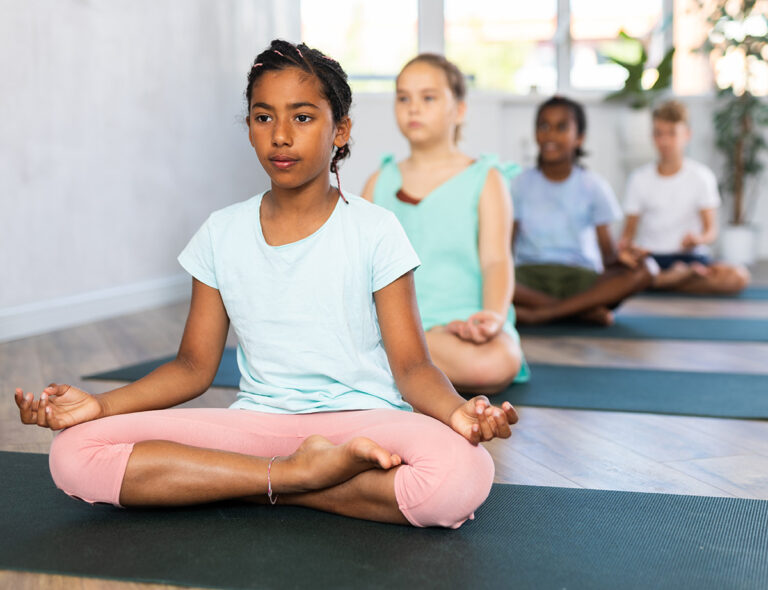By Deirdre Wilson
When I was a kid, my siblings and I rafted down our staircase in sleeping bags. And I remember clearly my mother’s outrage when she discovered us: “Do you have any idea how dangerous that is?!”
Moms – and many dads, too – have thwarted wild, risky play for generations. Today, with the laser-beam focus on keeping kids safe from toxins, physical injuries, predators and more, cries of “Be careful,” and “No! Someone could get hurt,” are parenting mantras.
So a new book advocating that mom and dad let loose and wrestle, mattress-surf down the stairs or jump off a low-hanging roof with their kids is bound to shock our cautious sensibilities.
That’s exactly what psychologist Larry Cohen, Ph.D., and physician Anthony DeBenedet, M.D., want. Their book, The Art of Roughhousing: Good Old-Fashioned Horseplay and Why Every Kid Needs It (Quirk Books, 2011; $14.95), turns the idea that parents have to keep kids’ raucous behavior in check on its head.
“As a society we’ve gone a little bit overboard. We’ve switched from safety first to safety only,” says Cohen, a specialist in play therapy whose acclaimed 2001 book Playful Parenting advocates using play to bond with our kids, solve behavior problems and boost their confidence.
“I think the bigger danger isn’t bumping your head while sliding down the stairs, it’s vegetating with your oversized thumbs,” Cohen says of children’s sedentary, screen-dominated lifestyles.
Besides, by quashing rowdy play, Cohen and DeBenedet assert, parents are missing out on an ideal way to bond with their kids and enhance their intelligence, physical fitness, social skills and sense of morality.
Really? Jumping off a 10-foot garage roof together does all that?
There’s Science Behind the Play
Cohen and DeBenedet cite numerous studies by human and animal behaviorists, dating back to the 1950s, to back their claims. Simply stated, research has found that roughhousing promotes:
• General intelligence – Wild, physical play releases a chemical called brain-derived neurotrophic factor (BDNF), which stimulates neuron growth in the brain’s cortex and hippocampus. Both areas are key to memory and advanced thinking (for skills like language and logic).
• Emotional intelligence – When you roughhouse with your kids, the authors say, you’re practicing revving up and calming down, gauging how the other person reacts and feels, and identifying any strong emotions that might emerge. If a child is angry or overwhelmed, for instance, he may bite a parent during roughhousing. Rather than punish that behavior, the parent can remind the child not to inflict hurt and ask why he might be angry, but the play can continue.
• Social skills – Good roughhousing means good-natured give and take in the action. Kids who are well-liked, the authors note, are those who engage in fun rough-and-tumble play, whereas kids who aren’t liked act aggressively. Horseplay is born out of feelings of friendship and affection; participating helps kids learn what’s accepted and what isn’t.
• Ethics and morality – Parents roughhousing with their kids model how someone bigger and stronger can hold back a bit while still playing. That’s a moral decision – to not overpower someone else, the authors say. Good roughhousing teaches kids that concept, as well as cooperation and trust.
• Physical fitness – This one is obvious. Roughhousing helps kids with complex motor learning, concentration, coordination, cardiovascular strength and flexibility, the authors say. Their book offers specific roughhousing moves to improve on all of these.
• Joy – It’s fun, uninhibited, and often dissolves into fits of laughter. Best of all, when parent and child calm down from a rowdy session of roughhousing, the quiet, happy affection and cuddling that ensue is deep and long-lasting.
“There’s a natural mood regulation going on,” says DeBenedet, a father of three who practices internal medicine at the University of Michigan Health System. “It happens because of various neurotransmitters that are released. You’re getting endorphins – like epinephrine and adrenalin that make you feel good and ready to face the world. You’re also getting this cuddle chemical, oxytocin, because you’re interacting with another human being. You get the joy from the endorphins, and then the oxytocin and the feeling that someone loves me, someone cares about me.”
All of these benefits apply to adults, too, from physical fitness to tuning into our kids and bonding through play, Cohen and DeBenedet say. They even cite research suggesting that physical play helps delay mental decline with age.
But Really – Jumping Off a Roof?
The Art of Roughhousing is primarily a guide to specific roughhousing moves, from pillow fights and floor wrestling to holding your child’s hands as she “walks” up the front of your body and back-flips onto the floor.
Some moves are acrobatic, requiring focus and coordination, but Cohen and DeBenedet insist they’re all doable. DeBenedet, who conceived the idea for the book after roughhousing with his oldest daughter and treasuring the benefits, was most interested in specific moves, while Cohen initially advocated a more generic brand – all-out, unstructured rolling around and wrestling. He’s now a convert to the more choreographed moves, he says, and the two men have taught families many of them during small roughhousing workshops.
The book describes moves appropriate for different ages. And while DeBenedet says ages 2-8 are prime for roughhousing, some moves (like slow-motion stage fighting) work well with teenagers. There are even introductory moves for parents unaccustomed to this kind of play – like sitting on the floor shoeless and trying to pull off each other’s socks.
And then there are the “extreme” roughhousing moves – jumping off the stairs at higher and higher levels or having your older child run toward a wall while you spot him as he attempts to run up that wall.
Mattress surfing down the stairs and jumping off a low-hanging roof (no higher than 10 feet) aren’t in that “extreme” chapter, but they’re in the book and will justifiably raise a few parental eyebrows. Still, Cohen and DeBenedet say that, with parental supervision, these moves are OK. They allow kids to take risks under the watchful, supportive eye of an adult, who will already have gauged whether there’s too much danger involved.
“Safety doesn’t come from just not doing something,” DeBenedet says. “It really comes more from learning about that something.”
Adds Cohen, “Safety comes from knowing within yourself what makes sense for you to do – what you can handle, what your child can handle, and being close together in the same situation. We know what kinds of things kids do when we turn around or aren’t at home. … It’s much safer to do it with them, to teach them how to do it safely, how to land, how to hold onto that mattress on the stairs.”
Deirdre Wilson is senior editor of the Boston Parents Paper.
Do Try This at Home
The Art of Roughhousing describes more than 60 activities for parents and kids, including these author favorites:
• Steamroller – Lie on your back with your child lying on your stomach. Wrap your arms around her and roll, making sure to put your weight on your elbows so she doesn’t get squished. (Toddlers)
• Whacky Whirling Dervish – Have your child take off his shoes and raise his arms. Take his hands, step back a little (so that he tilts toward you at a 45-degree angle) and start swinging him in a circle. At first, he’ll slide on the floor in his socks but, gradually, his body will lift off the floor as you spin him around. (Ages 3 to 7)
• Peter Parker – Have the child run diagonally toward a wall and try to walk a few steps up that wall. A parent spots the child to catch him as he comes down or help him get altitude. (Ages 8 and up)
– Deirdre Wilson




















